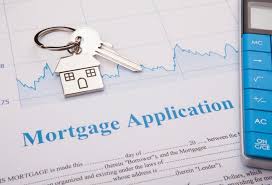We are currently in a very unique situation when it comes to 5-year fixed and 5-year variable interest rates. For the first time in almost a decade, the lowest 5-year fixed interest rate is more than 0.30% lower than the lowest available variable interest rate for new mortgages. For some, their current variable rate is 0.80% higher than what a new 5-year fixed interest rate could be.
Why is this important?
Variable mortgage penalties are only equivalent to 3 month’s interest. On a $400,000 mortgage with a net variable rate of 3.10%, the penalty would only be $3,100 ($775 per $100,000 of mortgage debt).
What are the savings to switching to a lower rate?
The following is an example to consider and assumes leaving your existing lender and transferring the existing mortgage balance, term and amortization to a new lender at a lower fixed rate:
$2,152.76 current monthly payment
$437,857.16 current outstanding balance
4 years and 0 months remaining on term and 24 years and 0 months remaining on amortization
$3,800 approximate penalty to break mortgage including discharge fee (legal fees and appraisal covered)
$2,061.88 new monthly payment on 5-year fixed rate
$437,857.16 new outstanding balance
4 years and 0 months remaining on term and 24 years and 0 months remaining on amortization
$90.88 savings per payment
Interest paid with current lender for remainder of term: $50,847.29
Principal paid with current lender for remainder of term: $52,485.19
Remaining balance at end of term: $385,371.97
Interest paid with new rate for remainder of term: $44,025.53
Principal paid with new rate for remainder of term: $54,944.71
Remaining balance at end of term with new rate: $382,912.45
For $3,800, this client has the potential to save almost $6,800 in interest, save $90.88 a month, while at the same time owing less on their total balance at the end of their term.
Now, this might not be for everyone. Variable, as you know, can go up and down. Locking into a 5-year fixed rate also takes away your ability to get out of your mortgage for only 3 months interest penalty compared to staying in a variable rate. For some people, maintaining the variable for an opportunity of having that rate drop below current 5-year fixed rates is worth waiting too.
There is no right or wrong decision. It is how you want your monthly payments structured and how much risk you want to allow for, both in rate variances and potential penalties.
To find out what kind of savings you could see with moving your variable rate into a fixed rate, please feel free to contact me.
dcarlson@jencormortgage.com
403.245.3636 x 2027


